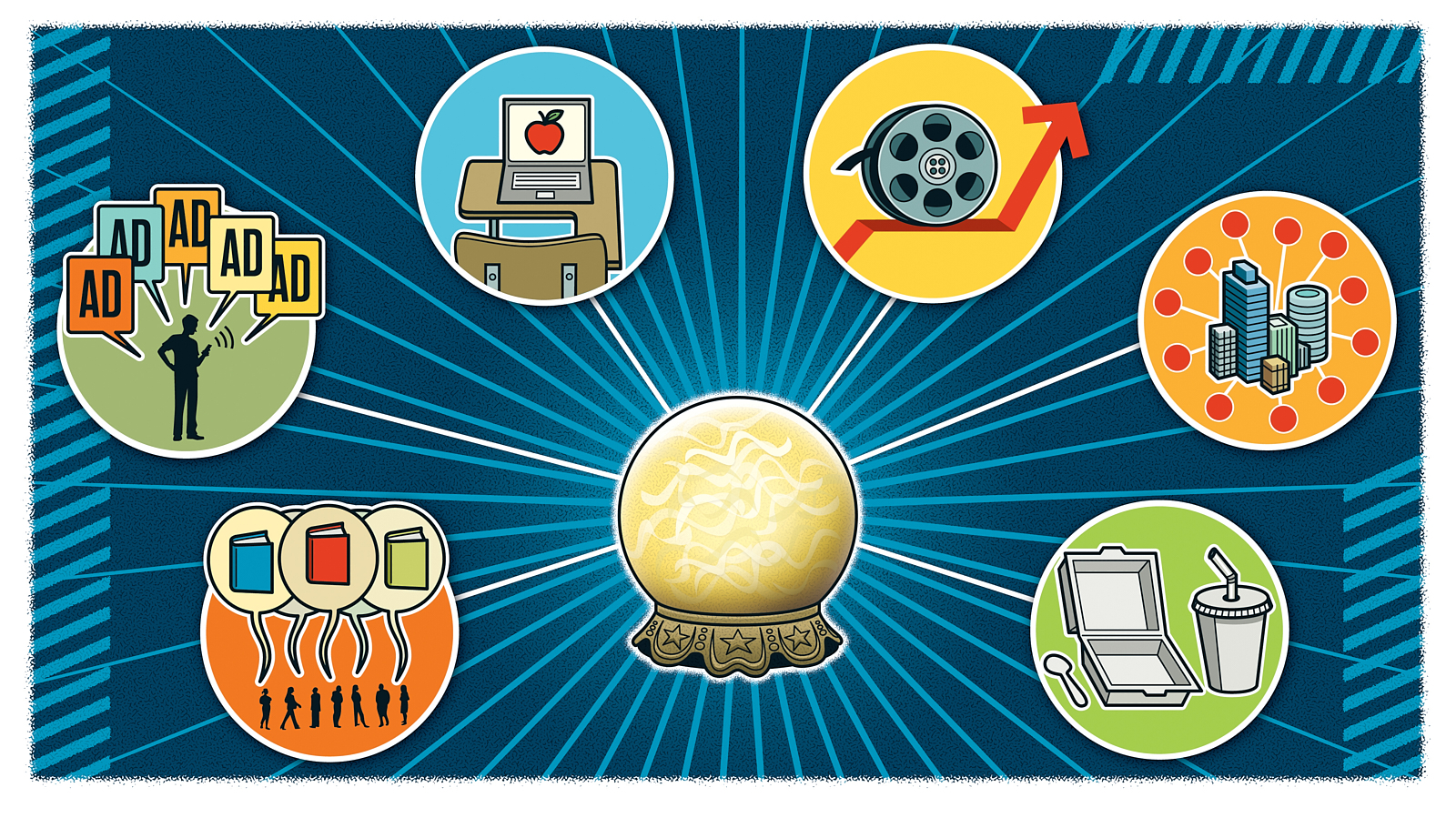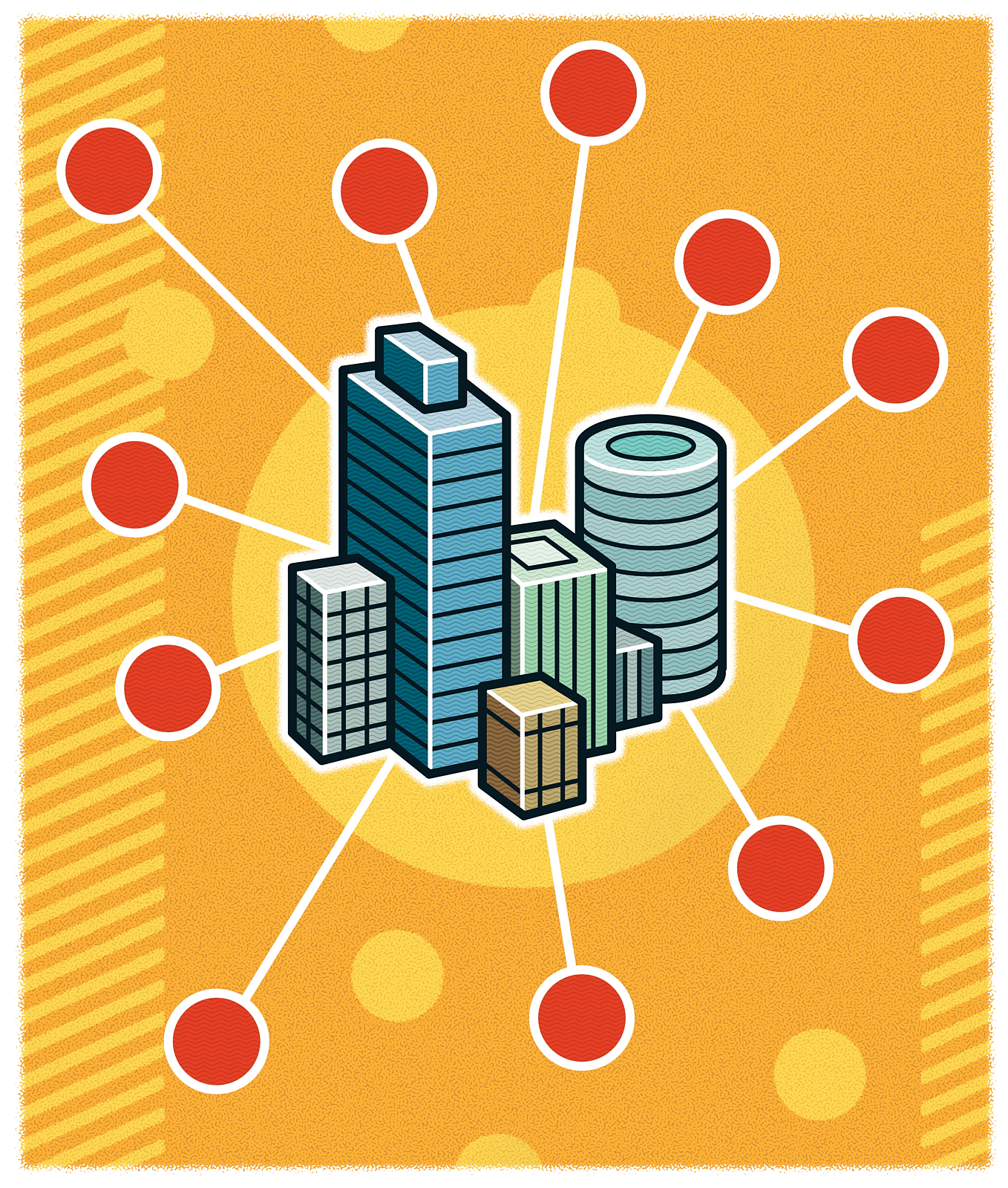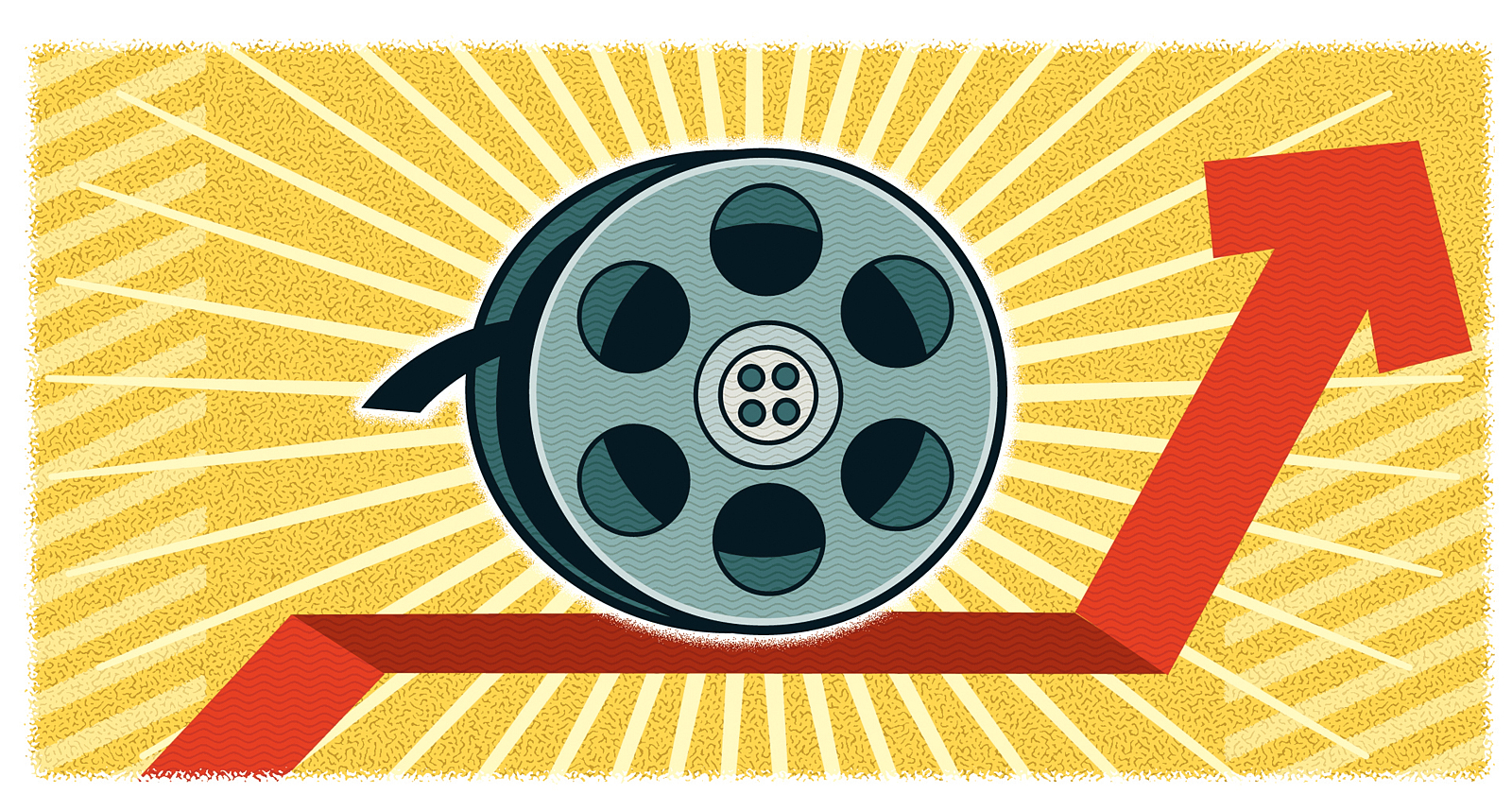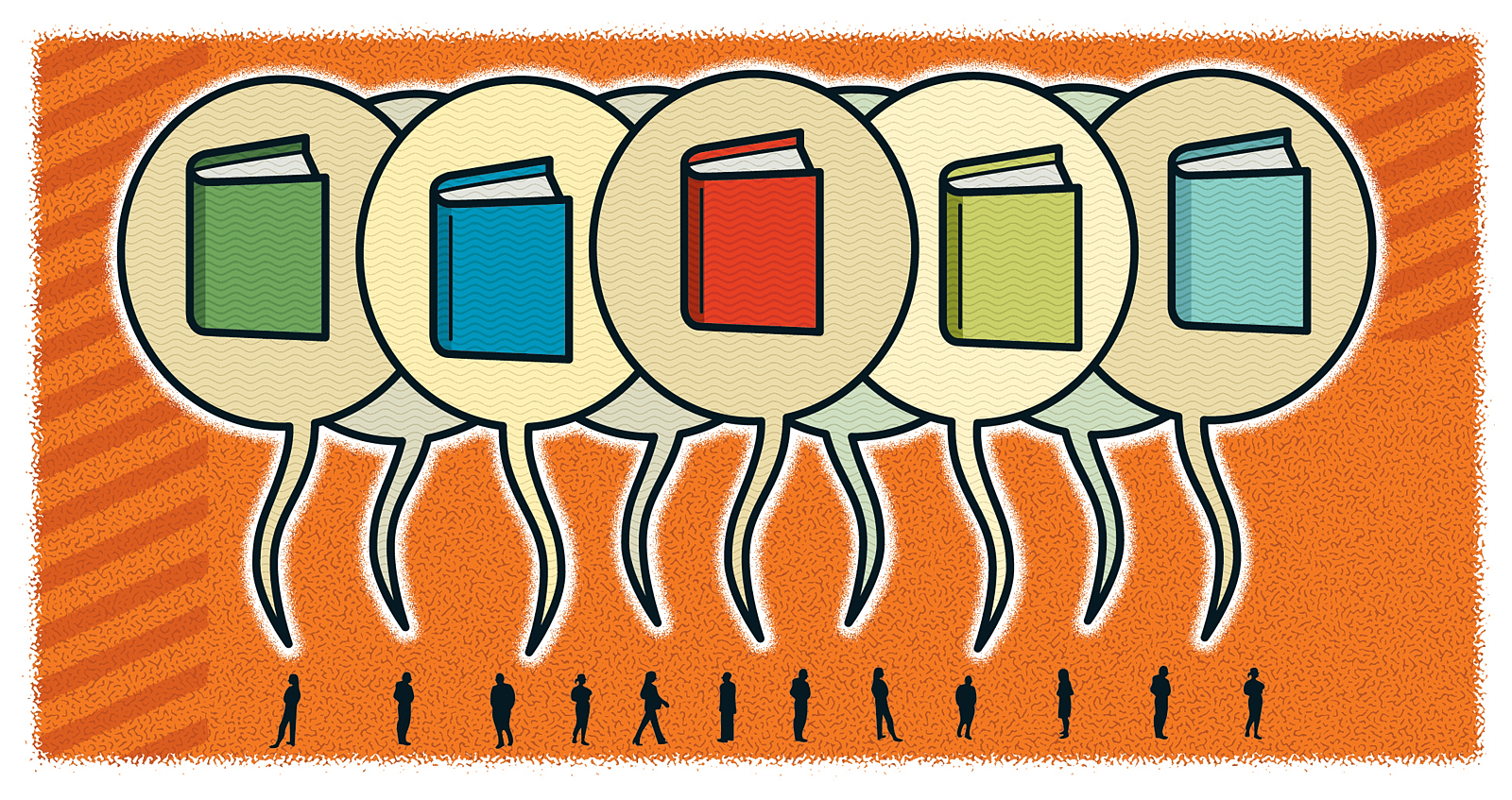Six UT Professors Envision how the Global Pandemic Will Transform their Industries Forever

Life will never be the same after COVID-19. We know this instinctively, and we know this from history books. There’s the intangible, collective grief and trauma that will impact pandemic survivors for the rest of their lives, and the political and social movements sparked by the inequalities the virus brought to light. Masks might stick around in some settings and situations. But there are countless other details of our daily lives that will change; less obvious effects that will come into sharper focus with more distance.
For instance, after the global flu pandemic in 1918, certain design elements in residential and commercial spaces permanently changed. White-tiled kitchens, bathrooms, and deli counters became the norm. Immaculate-looking surfaces evoked cleanliness and good health; any germs or grime could be easily seen and wiped away. The way many radiators are designed today, with the ability to heat a room on the coldest winter day with the window wide open, was a direct response to the Spanish flu, which was an airborne virus. This all led to housing reforms between the 1930s and 1970s, mainly to fight contagions caused by overcrowded living conditions. Times of war, famine, and in the most contemporary case of COVID-19—disease—can have long-term effects that span generations.
While we can’t predict the future, we can make educated guesses about how certain industries will be impacted by the pandemic. We spoke with UT faculty and professors from different disciplines, all experts in their fields, about what may have changed for good. We dove into the less obvious and the more tangible—what 100 years from now we may not even realize was a direct effect of COVID-19, like the superpowered steam radiators of the Roaring Twenties. Their predictions—too numerous to print—ran the gamut, from an uptick in direct-to-consumer food sales like Community Shared Agriculture (CSA) to straight-to-streaming film releases remaining the norm, and a new generation of socially conscious architects pushing to have more of a say in the design of quotidian buildings. Whether we see a more flexible workplace and the reconceptualization of work itself, a boom in plastic packaging due to our fear of touching potentially contaminated surfaces, or a new era flush with first-time novelists, post-pandemic life will be a fascinating new chapter in American history. Here are a few of our experts’ prognostications.
ARCHITECTURE
Goodbye to the old 9 to 5.

The pandemic laid bare a plethora of problems with the way our work lives are structured, and according to Dean of the School of Architecture Michelle Addington, now that we’ve seen behind the curtain, there’s no going back. Many workers who were able to clock in from home found they loved doing so. They were more productive, didn’t miss the commute, and enjoyed extra time with their families, regular exercise, new hobbies, and cooking healthier meals. Many don’t plan on returning to the office, and may not be required to, as plenty of employers have also appreciated not paying for office space. The widespread realization that a great deal of white-collar work can be accomplished via Zoom, email, and chat has led to the remote work renaissance.
That said, people miss seeing their colleagues, and many want an “in-real-life” shift as an option at least a few times each week to break up the monotony of their workweeks. Addington, a former Yale and Harvard professor who cut her teeth as a NASA engineer in the early 1970s, thinks our future workspace will be a far more flexible environment. The office—and the concept of work itself, if widespread unionizing efforts and demand for better working conditions for essential workers is any indication—will never be the same as it was in a pre-COVID world.
“How do we redesign our interior environments to allow the conductivity, the spontaneous conversations, all the things that we thought the open office plan was doing for us?” Addington asks. “Where do we find that kind of connection?”
This could mean rethinking the way time is spent in the physical work environment more than redesigning the space itself. When employees come into the office post-pandemic, that time may be geared toward collaborative tasks, leaving more challenging, deep-focus projects for untangling at the home desk. In short, collaboration will become more intentional, and all the normal structures of work are going to change.
“Basically, we’ve got to completely rethink what that is like, and allow both more individual choice, but at the same time, more community, more commonality,” Addington says.
What will that look like in practice? Workers may have more choices across the board; maybe starting their day at 7 a.m. instead of fitting themselves into the traditional 9-to-5 mold, so they can spend more time with their families. Or perhaps they’ll work longer each day but across fewer days so they can have a shorter workweek.
Addington acknowledges what public health experts have been saying: There will be future disasters and viruses, even if they are not as virulent as COVID-19. Heeding that warning will require long-term flexibility in our living and work environments, and an understanding from bosses that it’s something people will expect as they return to the office. She says that doesn’t just mean a “hot desk” arrangement—which is an office concept that predates the pandemic, wherein employees don’t have an assigned workspace.
Perhaps most important for our future, Addington believes, will be the dissolution of the hermetic seal—airtight environments that essentially seal us off from the exterior, “which too many think is a good approach to sustainability,” she says. Instead of super insulated buildings, we’ll see spaces that have differing degrees of enclosure and more of a blurring between interior and exterior. This will not only have a profound impact on energy use, but on material use. “That is what I mean when I talk about flexibility,” she continues. “It is in the environment of the spaces—and not in the very dated way of being able to move cubicles around or the more recent way of sitting anywhere you want.” Transitional spaces to the exterior will not only significantly reduce how much space needs controlling, but will in fact provide greater ventilation—the most important factor in reducing disease.
She hopes these changes will be far-reaching and systemic. “We have to completely redesign our workplaces,” Addington says. “What scares me is if we come out of this thinking, ‘We can do an even more sophisticated heating and ventilation system.’ That would be it for me. That would just be like ... we can’t continue to go down that path. We just can’t. It needs to be bigger.”
ENTERTAINMENT
Medium-budget movies are the future.

In 2017, the film industry magazine Little White Lies published “A requiem for medium-sized movies,” decrying the death of movies in the middle, ones that are typically scaled on a budget between $2 million and $80 million. A few years later, Vanity Fair asked, “Is the Mid-Budget Movie an Endangered Species?” But that was before the pandemic wreaked havoc across the entertainment industry. Hollywood was a major casualty of the virus, and along with artists from other industries, casts, crews, and production teams found themselves unemployed because of filming restrictions. It was unsafe to travel and work together on set, and when restrictions gradually lifted, and some filming resumed, it was only projects that were well funded enough to pay for regular COVID-19 testing and personal protective equipment (PPE) for cast and crew that persisted.
With future health crises looming, Adriana Serrano, an assistant professor in the College of Fine Arts and the Moody College of Communication, thinks many of the practices film crews adopted during COVID-19—testing, quarantining, wearing PPE—are likely here to stay, at least in some form.
“I think what is coming is more medium-sized projects where producers can still make really good projects,” says Serrano, the production designer behind feature films like Afternoon Delight (directed by Jill Soloway and starring Kathryn Hahn). She continues, “I don’t think the productions are going to have huge crews anymore. Producers are moving away from huge, huge productions. Everybody wants to have the best movies or series that make money, right? But I don’t think that necessarily means that they are huge.”
What will that mean in practice? To cut down on travel costs, filming locations will probably be limited, as well as crew sizes. There might not be too many scenes with extras and physical special effects.
“This affects the stories that filmmakers get to choose to bring into production,” Serrano says. “Productions will try to lower the risks of having the film not be done. Also, producers will have to consider testing and quarantine in their budgets and film in geographical places that have tax incentives, have trained crews, and feel safe to film.” Another aspect she thinks will develop in the coming years will be designers exploring the use of virtual sets.
Pre-COVID, entertainment reporters wrote that there was a “malaise” for the low-to-midsize-budgeted film, but the reception for the same types of films will likely be much different following the plague year. People are craving new content, so the state of the middle is about to enjoy a reception it may not have received otherwise.
Low-budget, independent films could have difficulty getting off the ground, and huge, studio-produced blockbusters may be harder for people to take a chance on. Enter the mid-budget darling. Think Moonlight, Get Out, and Lost in Translation, all made for under $5 million. What once was pitted against streaming services will have a distinct advantage now that the playing field has been somewhat leveled. Over the past year, Wonder Woman 1984 premiered on HBO Max and Mulan on Disney+, to name just two of the high-budget films that went straight to streaming. Now that they’ve seen that this model can work, many studios may not plan on ever going back.
FOOD
Single-use plastics rise again.

Sustainability efforts took a colossal nosedive during the pandemic, and that trend may be here to stay, says Raj Patel, a journalist, author, and research professor at the LBJ School of Public Affairs. As companies and individuals alike made efforts to stay safe against the threat of a deadly virus, the inroads that sustainable and reusable containers had just made in the food industry were lost to the resurgence of individually wrapped apples, bananas, garlic, everything; plastic containers; disposable utensils; and other food packaging. Until mid-May 2020, the Centers for Disease Control and Prevention (CDC) advised that non-porous containers put users at risk. Though we now know it’s highly unlikely to spread COVID-19 through surfaces and contact, there is a small risk that glass, tabletops, thin containers, beverage cups, and straws could all be potential carriers.
In an all-out effort to avoid spreading the virus, food providers began wrapping everything in plastic to provide a sense of safety and create a barrier. Out of an abundance of caution, restaurants, grocery stores, school cafeterias, and other food companies switched from reusable and sustainable options to single-use plastics, and places that had never before offered takeout or delivery options began to do so.
“Those kinds of concerns, I think, have enabled the plastics industry to build and label itself as a purveyor of cleanliness and hygiene,” Patel says, “with the idea that there’s something much more throwaway rather than containers to get reused and recycled.”
Then, in some cases, sustainability went out the window because businesses were just trying to stay afloat, and the worst container option for the planet was the best one for the bottom line. According to the trade publication Packaging Digest, “Sustainability strategies were impacted as buyers reverted to buying expanded polystyrene (EPS) foam because it was all that was available, and it caused the least budgetary impact.”
The course that the pandemic set us on, is, in so many ways, not one that is easily reversed. And that includes the great plastic boom. There will be more plastic than fish in the sea by the year 2050, and we are inching dangerously close to the point of irreversible climate change, yet Patel still engenders hope in his readers and food policy students. As he said in a 2018 interview with Hunter College’s Food Policy Center: “What’s reported far less is that there are groups around the world with ideas to confront climate change—and capitalism—whose ideas work.”
For now, he says the reason we don’t feel a sense of urgency is because the plastics industry reassures us, and lawmakers, that everything will be fine when they know very well it won’t.
“Change won’t come simply through municipal demands around single-use plastics,” Patel says. “It’ll also take the kinds of cultural shift we’ve seen in Europe and parts of Asia, and a more aggressive use of public health and environmental legislation against the fossil fuel and plastics industry. This is already a culture war issue in Austin—and as a result, the plastics industry and the recipients of their political largesse will triumph over the very real public health concerns around plastics exposure.”
ADVERTISING
Wherever you go, there your ads will be.

Relegated to their homes to help stop the spread of coronavirus this past year, consumers increasingly turned to online sources for everything from food and clothing to everyday necessities like toilet paper and cleaning products. This reality hastened a future where marketing is more hyper-personal than ever. The pandemic accelerated the digitization of behavior—and with that digitization comes data. Marketers can use that data to deliver increasingly personalized recommendations and experiences—for better or for worse, says Assistant Professor Adrian Ward, a psychologist who teaches marketing and consumer behavior at the McCombs School of Business.
An award-winning professor in his early 30s, Ward is a Harvard alum who is more interested in investigating what drives consumer behavior and decision-making from a cognitive and psychological standpoint than researching the business side of advertising.
Retailers have always tracked purchasing behaviors, long before smartphones and online ordering became rote. “That whole thing existed before,” Ward says, “but you can see a lot of different ways how that could be accelerated in the past year.” Marketers already employed tailored ads, ones that go beyond simply showing the right product at the right time. One example of this method is how Netflix promotes a show with different header images based on a viewer’s preferences and history. But the pandemic only strengthened such tactics.
“If we’re doing more and more things digitally ... that’s more areas where that data tracking can come into play, right? Which are more data points, just across even more areas of our lives,” Ward says. To the extent that we shifted offline behaviors to online over the past year—instant messaging or emailing instead of meeting in person—we have increased the size of our digital footprints, or behavioral data. Ward say what’s particularly important about this is that, “digital footprints are not just a historical record and what you have done. They are used to predict both what you will do and what you are like. And with more data, these predictions become more accurate.”
He finds the “what you are like” data particularly interesting (frankly, “worrying”) when it comes to things like behavioral influence. Research shows that through machine learning algorithms, seemingly innocuous data can be used to infer pretty private info (personality from Facebook likes, sexual orientation from profile pictures)—and that targeting using these psychographic data is more effective than targeting based on more overtly observable traits.
“It’s the difference between a firm knowing that I like rom-coms, so they send targeted ads for rom-coms and a firm knowing that I like rom-coms and am an introvert, so they send ads specifically tailored to appeal to my introverted tendencies,” he says. “Or the difference between a firm knowing that I’m an unemployed electrician looking for a job versus an unemployed electrician with low self-esteem looking for a job. In the former case, they might know that they can hire me if they need an electrician; in the latter, they might know that they can offer me less than I’m worth.”
Brands are now much more aware of an individual’s viewing habits, clicks, purchases, and personal conversations because the algorithms are getting more complex and because we are generating more data just by going about our daily lives. But more personalization doesn’t necessarily mean better. Finding an online community that might not exist for you locally is great, but all this data floating around can serve more corrupt purposes too, as was seen with the Facebook-Cambridge Analytica scandal during the 2016 presidential campaign, when millions of Facebook users had their data used without their consent for political advertising. It’s not just what you do, but what can be inferred based on what you do.
“What stuff like Cambridge Analytica showed is that based on things that seem pretty innocuous, U.S. firms or governments or people who might have, you know, nefarious intentions, can figure out things that feel really intimate,” Ward says.
Like it or not, in the future, brands might know you better than you know yourself.
LITERATURE
Everyone will write a book.

Bret Anthony Johnston, bestselling author of Remember Me Like This, and director of UT’s Michener Center for Writers, thinks we’re about to see a boom of first-time novelists.
“I think we’ll see more artists and writers on the other side of the pandemic,” he says. “I certainly hope so. We’ve already suffered so much loss, but I believe the severity of this global trauma—not to mention the severity of adjacent national, regional, and localized traumas—will spawn more artists than it silences. I think we will see a beautiful and inspiring wave of people for whom the status quo will no longer suffice.” The pandemic put peoples’ life choices in stark relief, so they’ll scrap plans for comfortable careers and instead throw themselves into more meaningful vocations. “Folks who never saw themselves in medical school or running for office will embark on exactly those things, and we’ll see others wagering on themselves as artists. I’m willing to bet on them, too,” Johnston continues.
And while embarking on a career as a fiction writer in the wake of a pandemic that has left over 500,000 dead just in the United States, decimated entire industries, and brought unemployment to a level not seen since the 1930s certainly may not be the most stable option, it’s not nihilism that will swell the new ranks of novelists. Johnston believes COVID-19 may have put a fire in the bellies of many writers who may otherwise not have chosen such an unsteady and financially perilous path, not unlike the choices people tend to make when they get a terminal diagnosis, or are otherwise reminded of life’s fleeting, precious nature.
“Considering everything we’ve endured this past year,” he says, “the making of literary art can seem frivolous or self-indulgent. However, I believe it’s quite the opposite and I try to remind the [Michener] fellows of this. As writers, we use craft to move beyond our own narrow experiences and engage subjects that are far more significant.”
Like all careers in the arts, fiction writing has always been a competitive field, one that is rife with rejection; there are only so many agents and book advances to go around. So, will the new age of novelists necessitate new publishing houses and independent presses?
“Without question,” Johnston says. “There has been a refreshing and not insignificant influx of alternative presses for a while now, and they are where some of the most trenchant and innovative work is finding a home. I fear some of those have not survived the pandemic, but I’m confident the movement toward a broader and more inclusive culture in publishing will sustain itself.”
And while there’s been much ado about the glut of pandemic books to come—and come they will, Johnston assures us, most of them nonfiction and forgettable—that’s perfectly fine. As for the literature that will last, he says, “I suspect we’ll need to wait awhile. It’s not impossible to imagine a novel or collection of poetry excavating this moment sooner than later, but it’s a tall order. Timeless art tends to take, well, a lot of time. The books we love—those we write, those we read—are protests and prayers; they’re invitations to participate in centuries-spanning conversations. They are considered responses, not knee-jerk reactions.”
EDUCATION
Remote learning is here to stay.

As organizations become increasingly tech-driven, Min Liu, a professor in the College of Education’s Department of Curriculum and Instruction, predicts that classrooms will also feature more tech and fewer whiteboards. It’s a shift that was in motion already, but the pandemic put tech-ified classrooms on the fast-track. Liu says that it is one positive outcome of a turbulent year—a way to better prepare students for jobs that use online platforms, messaging systems, and other multimedia tools. And as more online learning tools are integrated into curriculum, she’s passionate about helping other teachers feel as confident using digital media as she does. Lately, she’s been encouraged to see some of her colleagues who hadn’t previously taught online classes become more comfortable with the format, and more adept at switching between virtual and in-person lessons.
When the pandemic hit and classes migrated online, Liu had a fairly easy transition to make. She specializes in educational uses of new media and emerging technologies, particularly the impact those technologies have on teaching and learning. One of her most notable projects was a 2010 finalist for a National Learning Challenge Competition sponsored by Disney Research: Alien Rescue, an online, immersive learning program that is used in at least 30 states and four countries as part of the middle school science curriculum.
However, like most educators, she missed getting to see and know her students in person this past year. The screen is no substitute for in-person interactions. And yet, she—along with teachers and professors across the country—adapted.
“Without this opportunity, I probably would have continued to do the things that I did before ... but this opened up new things, new ways for us to engage,” Liu says.
Students are already tech-savvy, and Liu believes they, along with their teachers, will find that these tools just become more intuitive the more they use them.
“As students will be more comfortable, educators will be more comfortable,” she says. “Technology is already part of daily life anyway. It will become more so.” More industries are becoming dependent on remote work, and, “we are educators. We prepare students, right? So, we are kind of helping them to move … there will be no transition to that kind of environment. I feel like technology becomes even more important,” Liu continues.
It’s that kind of spirit that she says the future will require of teachers.
Liu explains: “The pandemic offers an opportunity. How can you make best use of technologies in leveraging what is, and also work around constraints to teach better? I feel like we are kind of forced into thinking this way, how to design structures better, and then deliver instruction better to create more collaborative, engaging theories using technology.”
Illustrations by Peter and Maria Hoey





